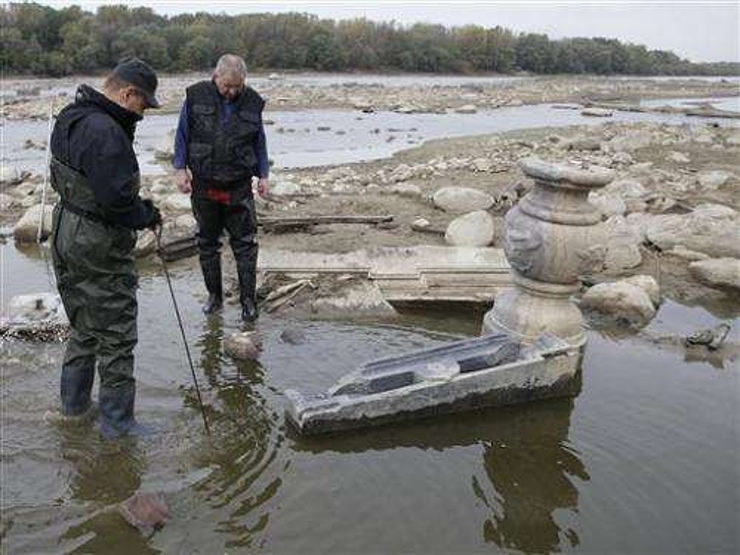13 Jul 2012 Water fall reveals hundreds of years old robbery
Categories: Calendar , Nálezy nejenom s detektorem kovů ve východní Evropě

Polish archaeologists got a unique view nine years ago. There was so little water in the Vistula River that they uncovered historical gems that had been lying on the bottom for years. They came from a theft.
Experts sent a police helicopter to retrieve the precious relics from the mud. The largest of the pieces weighed around 800 kilograms. They were historical objects that came from a theft.
"This is a very unusual help for us. We usually send a helicopter to the field when we are searching for a person or during floods," said Warsaw police spokesman Mariusz Mrozek.
But the thief will not be caught again. "All the objects date back to the seventeenth century. "They are parts of buildings or statues. It is loot that was stolen during the Swedish raid," archaeologist Hubert Kowalski outlined at the time.
Specifically, fragments of marble and sandstone tiles, elements from fountains, window ledges, columns, tiles, as well as cannonballs were found. Archaeologists searched the Vistula with metal detectors and sonar. Thanks to the subsidence, they reached places that are not normally accessible.
Cranes also helped with lifting heavy objects. With the help of water pumps supplied, firefighters then lifted layers of sand and stones. "The Swedes tried to steal the objects in 1656 during the invasion. But there was little water in the river at the time and they failed. Some of the ships were wrecked," the archaeologist added.
The obelisks, column heads and tympanums probably came from the Kazimierzowski Castle, which is now part of the University of Warsaw. Parts of old bridges, ships and ceramic objects dating from the 7th to 4th centuries BC have also emerged from the riverbed.
"What is absolutely incredible is that all the monuments have lasted over 350 years on the Vistula's bed and are in great condition. They are even in better condition than if they had remained in their original place and the Swedes had not stolen them," the archaeologist concluded.
The heat was to blame for the Vistula's decline. The bottom is made up of a layer of sand eight to nine metres deep and the river plays with it at will...
Sources: www.tiscali.cz, www.bbc.com, www.irozhlas.cz, www.phys.org
The article is included in categories: